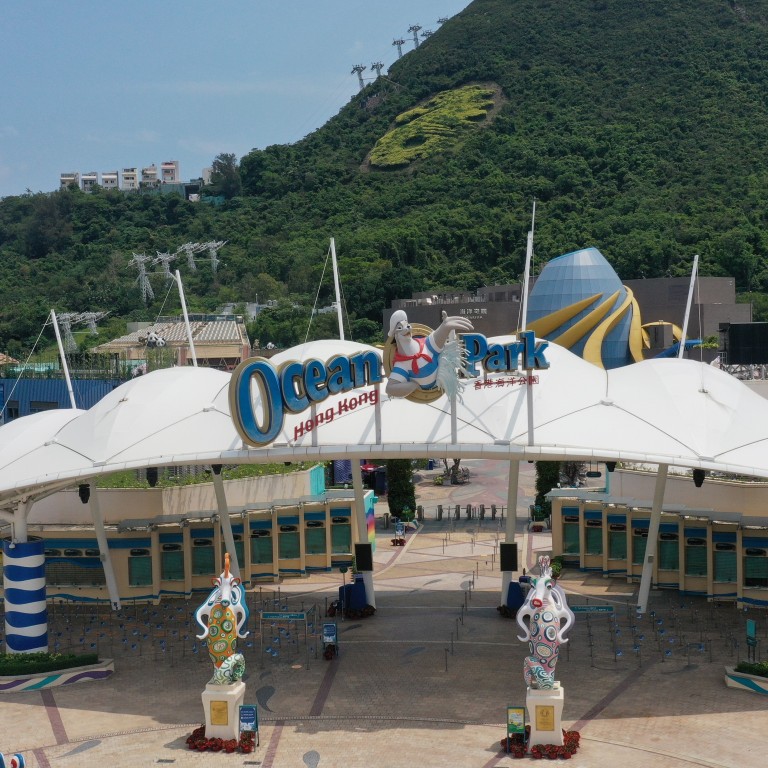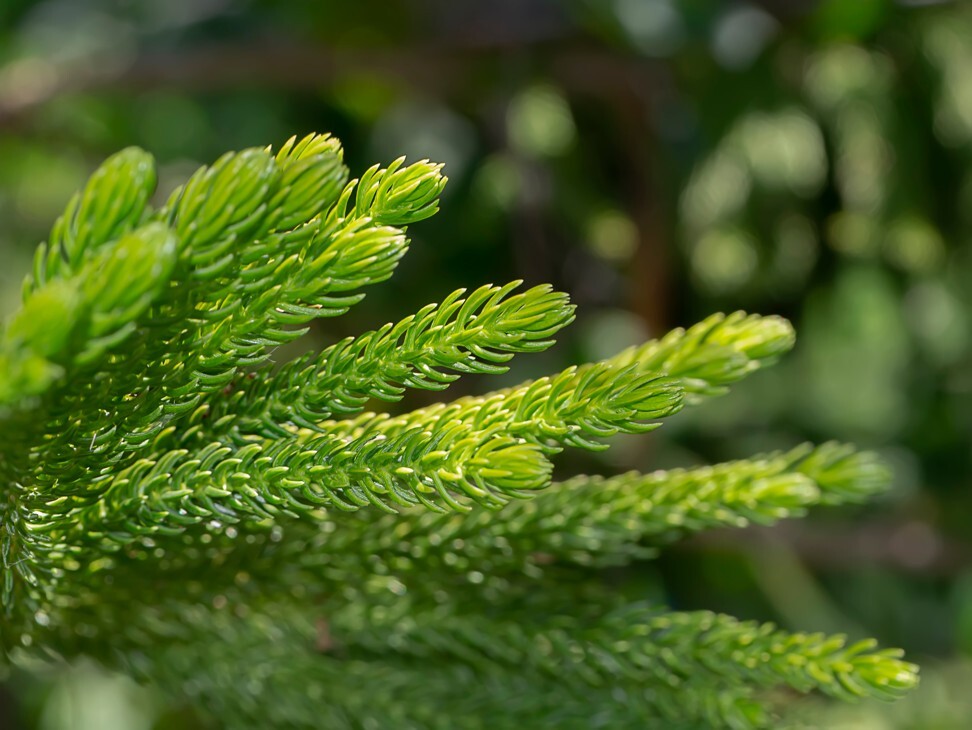
Chinese scientists find way to stop phones overheating, inspired by Hong Kong’s Ocean Park
- 3D-printed surface is used to mimic Araucaria tree leaves’ ability to make liquid spread in more than one direction
- Altering two centuries of wisdom, the discovery has possible uses in cooling electronic devices, pregnancy tests and anti-counterfeit labels
Researchers at City University of Hong Kong began a two-year project inspired by Araucaria trees after one of the scientists visited the theme park and was struck by the leaves’ unique structure of ratchet-like spirals.
The project bore fruit and the results were published on Thursday in the peer-reviewed journal Science.
“The structure seems simple, but we could not have created it without the help of mother nature,” lead researcher Wang Zuankai told the South China Morning Post.
The surface replicating the leaf structure could be used to prevent electronic devices such as phones overheating, he said, by sending liquid in a certain direction rapidly to speed up heat dissipation.
Another potential application would be pregnancy tests and other lateral flow tests, using the ratchets to direct the reagent, which detects a substance, to the detection lines.
The method could also be used to make labels for products to verify their authenticity, by applying liquid that would show a particular pattern of flow, Wang said.
The findings stemmed from “unexpected liquid transport behaviour” found by studying the leaves of the Araucaria trees – pinelike conifers native to the southern hemisphere. Liquids with different surface tensions spread in opposite directions, they found.
“For the first time, we demonstrated directional transport of different liquids on the same surface,” said Wang, chair professor in CityU’s mechanical engineering department.
The researchers found that ethanol, a liquid with low surface tension, flowed towards the leaf tips, while water, with higher surface tension, spread in the opposite direction.
A liquid placed on a surface tends to move in directions that reduce surface energy.
“You could control the direction of liquids on a surface, but the spreading direction was generally independent of the liquid property,” Wang said. “It was impossible to make different liquids go in different ways.”
Using their leaf-inspired 3D-printed surface, however, the researchers made a mixture of equal parts water and oil move in differing directions and completely separate, with no external energy input.
They also manipulated the liquid flow by adjusting the proportions of water and ethanol to vary the mixture’s surface tension.



